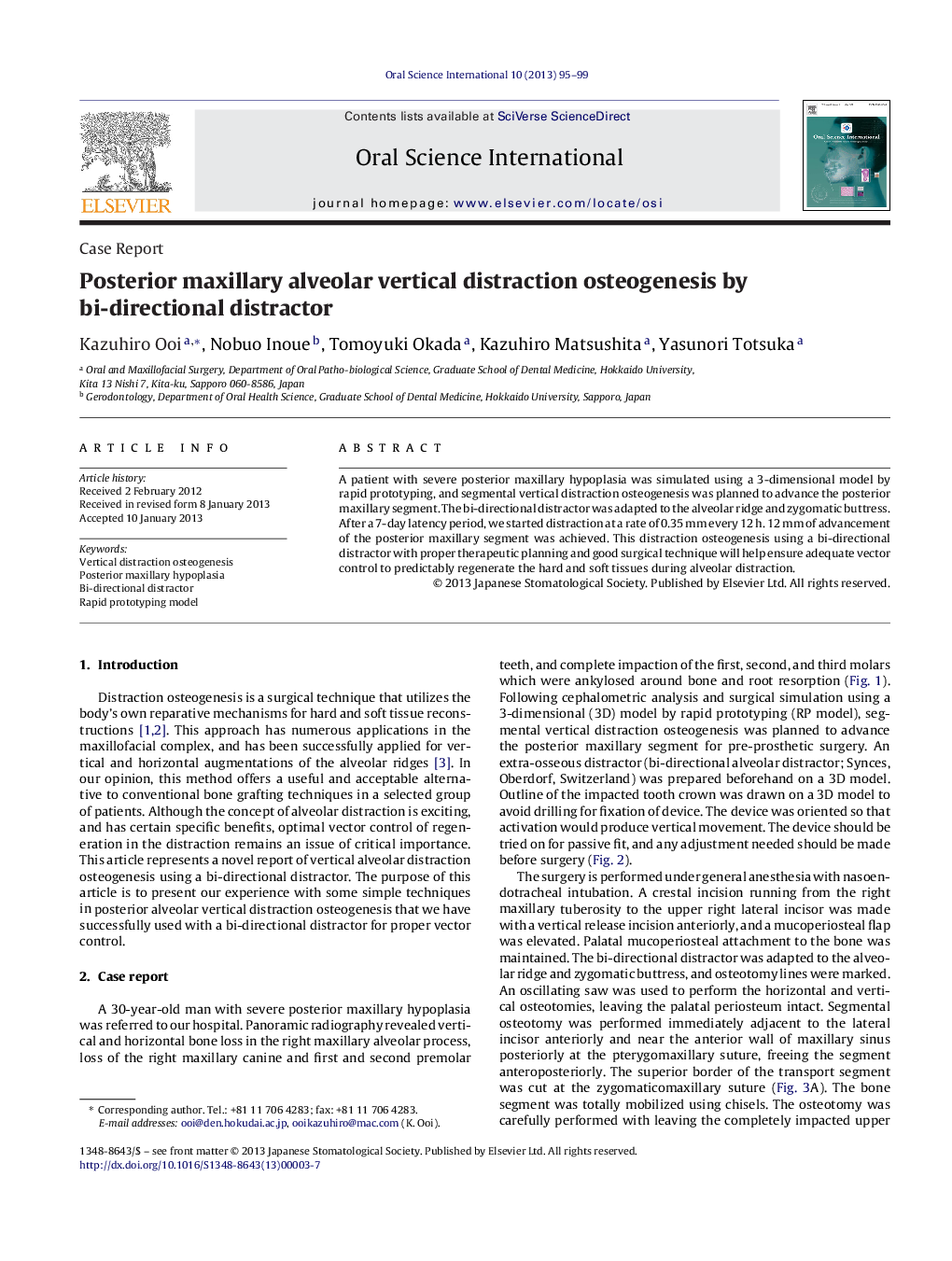| Article ID | Journal | Published Year | Pages | File Type |
|---|---|---|---|---|
| 2777185 | Oral Science International | 2013 | 5 Pages |
A patient with severe posterior maxillary hypoplasia was simulated using a 3-dimensional model by rapid prototyping, and segmental vertical distraction osteogenesis was planned to advance the posterior maxillary segment. The bi-directional distractor was adapted to the alveolar ridge and zygomatic buttress. After a 7-day latency period, we started distraction at a rate of 0.35 mm every 12 h. 12 mm of advancement of the posterior maxillary segment was achieved. This distraction osteogenesis using a bi-directional distractor with proper therapeutic planning and good surgical technique will help ensure adequate vector control to predictably regenerate the hard and soft tissues during alveolar distraction.
▸ A patient with severe posterior maxillary hypoplasia was simulated using a 3D model by rapid prototyping. ▸ Segmental vertical distraction osteogenesis was planned to advance the posterior maxillary segment. ▸ The bi-directional distractor was used for vertical distraction osteogenesis. ▸ This method helps ensure adequate vector control to predictably regenerate the hard and soft tissues during alveolar distraction.
